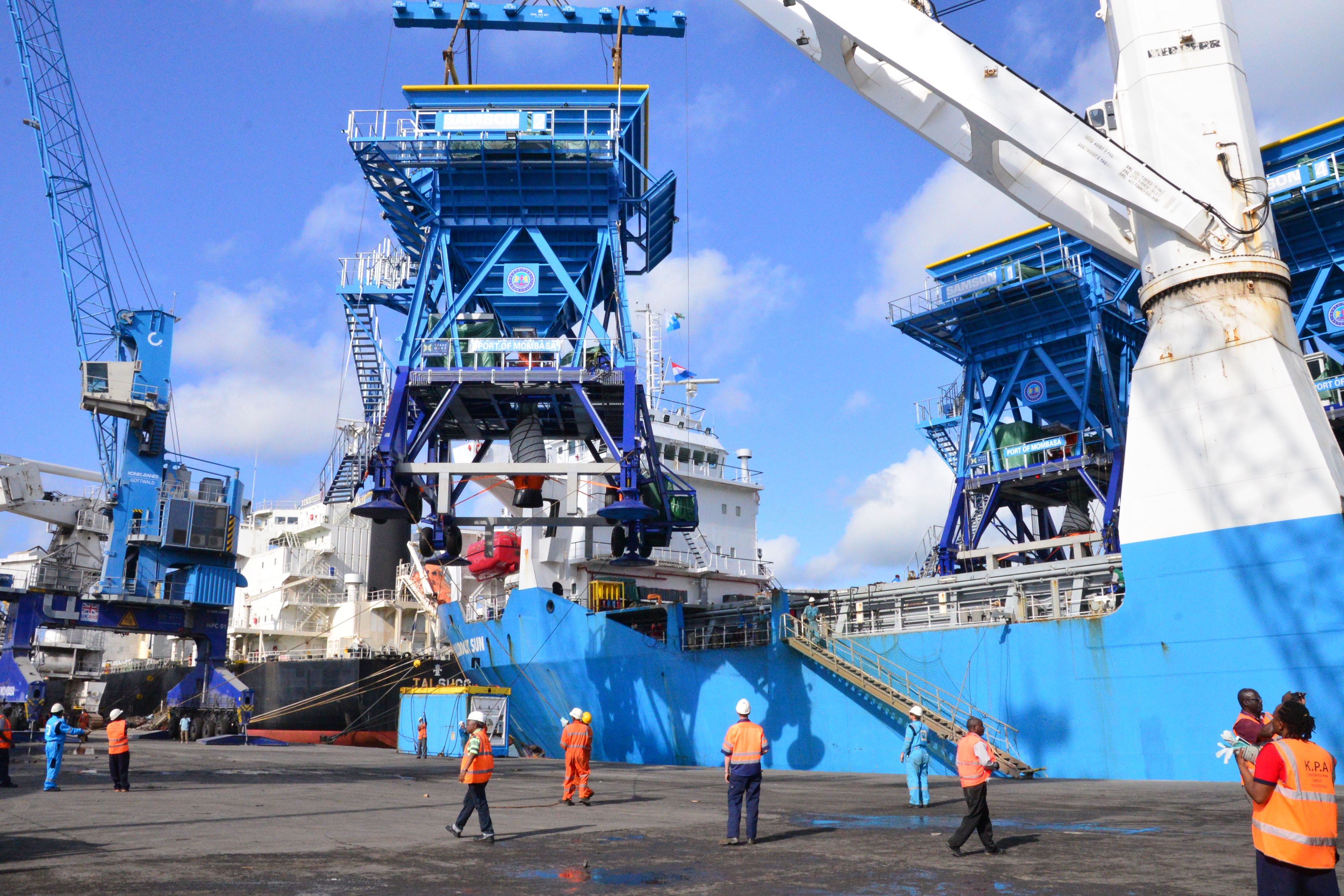
Business Excellence last visited the Kenyan Ports Authority (KPA) in June 2014, at a time when it was planning a second container terminal for Mombasa Port to further extend its capacity. Shortly after our feature, in August of that year, it agreed to a deal worth close to half a billion dollars with China Communications Construction Company (CCCC) for the construction of three new berths.
The berths were just one element of the ambitious Lama Port South Sudan Ethiopia Transport (LAPSSET) corridor program. LAPSSET, in turn, was an important component of the Kenya 2030 national planning strategy, which focused on reforms and development across 10 sectors in the economy.The estimated total investment for LAPSSET was set to reach $24 billion - a huge undertaking for a country whose GDP is approximately $75 billion.
On our return to KPA this year, we took a look at how the new berths being constructed by CCCC were shaping up and the difference they were likely to make in the years ahead. The last number of years haven’t always been without their challenges for KPA but if the colourful history of Mombasa - ‘the city of merchants,’ and Africa’s fifth busiest port- teaches us anything, it’s that this is a city which is highly resilient.
Progress Report
By any measure, 2019 was a good year for KPA. In August, the first berth of the aforementioned CCCC project was delivered. And as work continued on the second and third berths, which are due to be completed by December 2020, the company finished the year on a positive note by registering a record 1.4 million cargo boxes, outperforming the target of 1.35 million cargo boxes which had been set for the year.
This translated into over 34 million tones of throughput cargo at Mombasa Port, a nearly 20% increase on the equivalent figure for 2018. This is the culmination of all the efforts being undertaken by the KPA and its stakeholders. Modernization and expansion of the port infrastructure, for example, has meant that there are far fewer logistics bottlenecks, easing the flow of trade in Kenya and East Africa in general. Remarkably, twenty-foot equivalent units (termed “teus” in the industry), grew by 87% year on year to 197,272.
On this basis, KPA is already ahead of the KPIs set in the 5-year plan, which sets a target of 1.5 million cargo boxes by 2022. The coronavirus pandemic that has hit in early 2020 will inevitably be a drag on the company’s efforts this year, but in conjunction with the Kenyan government and other stakeholders, KPA has already put in place a range of measures to counteract its negative impact.
The development of berths 22 and 23 at Mombasa Port is underway and making good progress. Dredging work is being carried out by Boskalis and should be finished by 2021, allowing the next phase of construction to commence. Both berths are already approximately sixty percent complete. The deepening of the Kilindini channel has also allowed larger o berth and improved cargo handling capacity which has improved ship turn-around time and cargo evacuation.
KPA’s progress is underpinned by the company’s long-term strategic plan, but also greater integration with its partners, examples being the Standard Gauge Railway (SGR( and Nairobi Inland Container Depot (ICD). With their support, KPA has been able to reduce average cargo dwell-time from 23 days to around four days within 12 months. This has also resulted in record cargo numbers for SGR, coming in at around three million tonnes for 2019.
Partners and Suppliers
In addition to the Kenyan government, Trademark East Africa (TMEA) has become one of the most important stakeholders for the KPA over the past few years. Developing trade logistics hubs is of limited use if there aren’t good trade relations, which is where TMEA operates - seeking to expand Kenya’s trade horizons.
The speed at which the turnaround has occurred at the KPA’s ports is a result of improving their own processes, but also demanding more of their stakeholders. All of the KPA’s partners and suppliers have aided in raising standards. This includes stalwarts of the shipping industry such as Solutions (MTBS) for maritime consulting, RAIS Shipping Services, the liner agency, and the Comarco Group, a Kenya-based shipping contractor. The Kenya Ships Agents Association also provides ongoing invaluable support.
In addition to the aforementioned dredging work on berths 22 and 23 being carried out by Boskalis, engineering work on the same is being conducted by Southern Engineering Co. Ltd (SECO) and African Marine & General Engineering Company (AMGECO). Continuous and uninterrupted energy at the KPA’s ports is ;provided by PowerGen and KETRACO, while security is taken care of by Solvit Security Solutions.
The Revolution Begins Here
When the MV Lowlands Mimosa berthed in the Port of Mombasa in June 2019, it made very few headlines, even in Kenya. But make no mistake - this was a huge milestone for the Port of Mombasa and the KPA. Lowlands Mimosa is the biggest bulk carrier vessel in the world and its berthing at the port was a sign that a revolution in logistics is afoot here. That a vessel of this magnitude would arrive at Mombasa would have been unthinkable less than five years ago.
All of the numbers at Kenya Ports Authority are trending upwards and this doesn’t look like stopping anytime soon - too many stakeholders stand to benefit from its success - principally the people of Kenya, Ethiopia and Uganda. TEUs at Mombasa port are expected to continue their ascent to reach 3.5 million by 2030 and 5.9 million by 2047. Thanks to the KPA’s stellar work, the revolution is firmly underway in East African logistics.



 Kenyan Ports Authority - June2020.pdf
Kenyan Ports Authority - June2020.pdf








